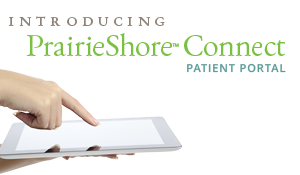Lumbar Sympathetic Block
What is a lumbar sympathetic block?
A sympathetic nerve block is the injection of a local anesthetic into a sympathetic ganglion to diagnose and/or treat pain disorders that involve the sympathetic nervous system. The lumbar sympathetic nerves are located on either side of spine, in the lower back. When these nerves are irritated or injured, the blood supply to the lower half of your body may be affected and can produce pain or sensory changes. The injection is generally done as a part of the treatment of Reflex Sympathetic Dystrophy (RSD)/Complex Regional Pain Syndrome and Herpes Zoster (shingles) involving the legs. Certain patients with neuropathy or peripheral vascular disease may also benefit from lumbar sympathetic blocks.
How is a lumbar sympathetic block done?
Most of the patients receive some sedation, which makes the procedure easy to tolerate. The amount of sedation given generally depends upon the patient. The procedure is done under sterile conditions and with the patient lying on the stomach. The doctor will numb an area of skin on the lower back with a local anesthetic. Then, guided by an x-ray, he or she will insert another needle near the ganglion and inject the local anesthetic medication after a test dose of dye is used to confirm that the injected medication will spread in an appropriate area. When done, the needle is removed and a bandage is applied. Usually, the procedure takes less than 30 minutes, and patients can go home the same day.
How effective is a lumbar sympathetic block?
Two things may happen after receiving the block. First, you may experience complete pain relief. If this happens, your pain is related to your sympathetic nervous system and continued sympathetic nerve blocks will most likely be beneficial. Second, the pain does not go away, but your physician determines that the sympathetic block was physiologically successful. If this happens, your physician may determine that your pain is not originating from the sympathetic nervous system and the block is of diagnostic value.
Immediately after the injection, you may feel your lower extremity getting warm. In addition, you may notice that your pain may be gone or quite less, but the pain may return a few hours later as the anesthetic wears off. However, the blockade of sympathetic nerves may last for many more hours. Usually, the duration of relief gets longer after each injection. Commonly, people need a series of injections to continue the pain relief. Sometimes it takes only two injections; sometimes it takes more than 10.
What are the risks?
The risk of complication from a lumbar sympathetic block is very low. However, there could be bruising or soreness at the injection site. Serious complications, including infection, nerve injury, and bleeding, are uncommon.
Who should not have a lumbar sympathetic block?
If you are allergic to any of the medications to be injected, if you are on a blood thinning medication, if you have an active infection, if you are pregnant, or if you have poorly controlled diabetes or heart disease, you should speak with the doctor about your specific situation. You may need special instructions, lab testing, or perhaps need to reschedule.
What happens afterwards?
Your lower back and leg may feel warm or “different,” and you may begin to feel less pain. Your leg may feel numb or weak, but this feeling will subside when the anesthetic wears off. You should have a ride home. We advise the patients to take it easy for a day or so after the procedure. Perform the activities that you can tolerate. Some of the patients may go for immediate physical therapy. You can continue your regular diet and medications immediately. Unless there are complications, you should be able to return to your work the next day.
Is a lumbar sympathetic block right for you?
A lumbar sympathetic block may be right for you if you have lower back or leg pain — especially linked to reflex sympathetic dystrophy or complex regional pain syndrome — which does not respond to other treatment. Contact us for more information!
At PrairieShore™ Pain Center, our goal is to relieve your pain and improve your quality of life. If your primary physician has advised you to see a specialist for your pain, turn to us for help. To schedule your appointment, please contact us here or give us a call at (847) 883-0077.







